Adapted from a pair of my Ignite and Pecha Kucha talks, this article introduces newcomers to the basic “whys” and “hows” of backyard stargazing…
How YOU Can Become an Amateur Astronomer (And Why You’d Want To)
I love astronomy. I love it so much that I’ve spent over half my life as a planetarium educator, sharing my passion with just about anyone willing to listen. Before it was my career path, however, astronomy was “just” a hobby. Before that, it was a casual interest, sparked by my first very glimpse through a telescope.
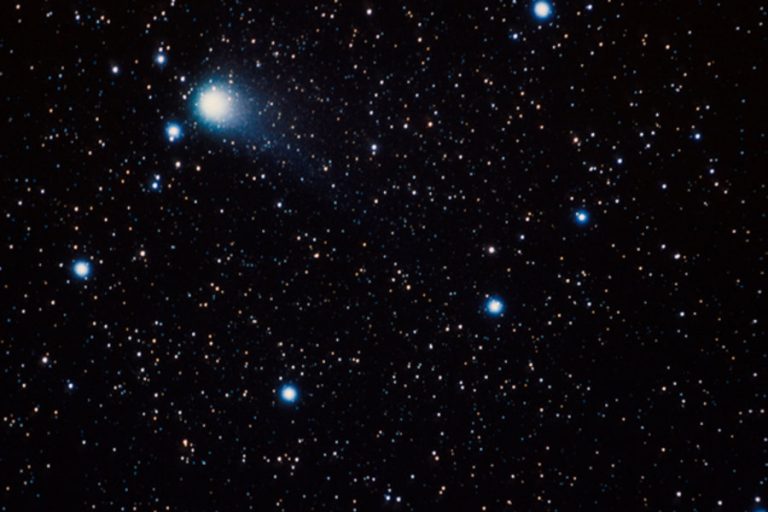
“That’s Halley’s Comet,” said the old astronomer, perched atop a stool in the parking lot of a local grocery store. Members of the local astronomy club had set up their telescopes as part of a public outreach event. The comet was just a fuzzy smudge of light in the eyepiece, but it was enough to drive my six-year-old imagination wild. What’s not to love about a filthy snowball, dive bombing our inner Solar System every 75 years, just for kicks?
“That’s the coolest thing I’ve ever seen!” I said, and meant it.
I’ve been very lucky in the years since. I’ve had the opportunity to cultivate my curiosity; to turn my growing love for astronomy into a central part of my life. But the spark that started me down this path isn’t unique. In fact, as I talk with thousands of people about astronomy each year, I hear one sentiment over and over: “All this space stuff… it’s all so fascinating! I’ve always wanted to learn more about it, but I’ve just never gotten around to it.”
These days, my answer is simple: There’s never been a better time to get around to it.
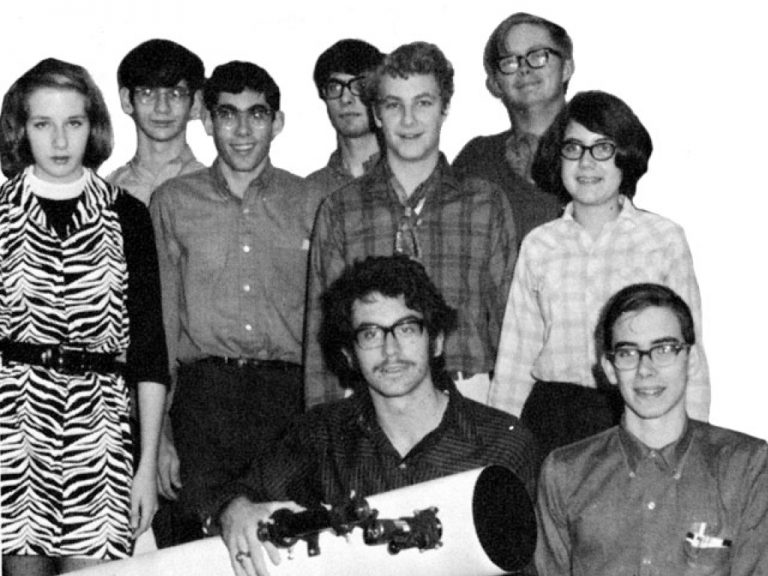
“Popular” astronomy used to be the exclusive domain of hardcore science nerds. In the 1950s, young, would-be astronomers spent months in their parents’ basements, grinding telescope mirrors from scratch. Even during my childhood in the 1980s, astronomy remained a fairly exclusive, inaccessible hobby. Tracking down the right people and places could be a challenge, especially if there wasn’t an established astronomy club in your area.
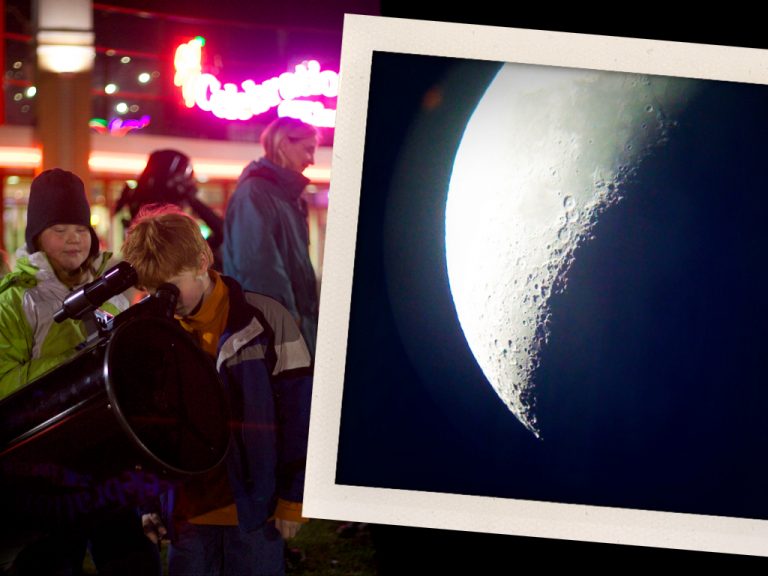
Today, the situation for aspiring amateur astronomers is dramatically different. If you want to learn your way around the sky, you can find countless resources (both online-only and local) with just a few clicks.
For those of you who haven’t experienced that initial spark of interest in astronomy, like so many people have over the course of human history, you might be asking: “Why should I care about any of this stuff? Why would I want to ‘do’ astronomy at all?”

It’s a fair question, and there are as many different answers as there are amateur astronomers.
There are the big, philosophical reasons. The universe is huge, and as humans, we possess an innate thirst for discovery. It’s in our nature to observe, to explore, to try to understand how things work. It’s worth noting that science and technology are, right now, giving us better insight into the workings of the universe than anyone has ever had, in the whole of human history. To me, that makes astronomy a tough thing to _not_ be interested in.
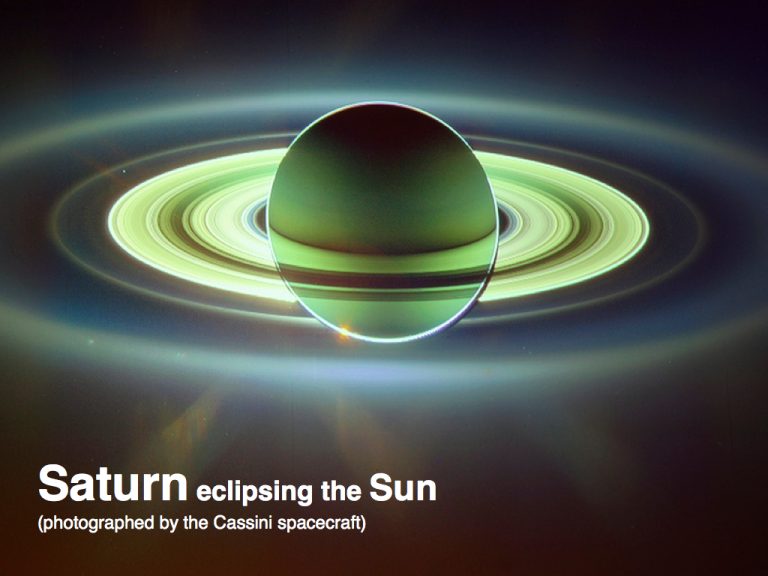
There are, of course, plenty of practical reasons to explore astronomy. Being scientifically literate has professional value, no matter what field you’re in. Even as a casual peruser of the cosmos, you’ll sharpen your skills of observation and critical thinking. Dig a little deeper, and you’ll soon find yourself picking up bits and pieces of astronomy’s underlying physics and mathematics. Astronomy has always been one of the cornerstones of the physical sciences, and we live in an age where one’s knowledge of science and technology is worth more than ever.
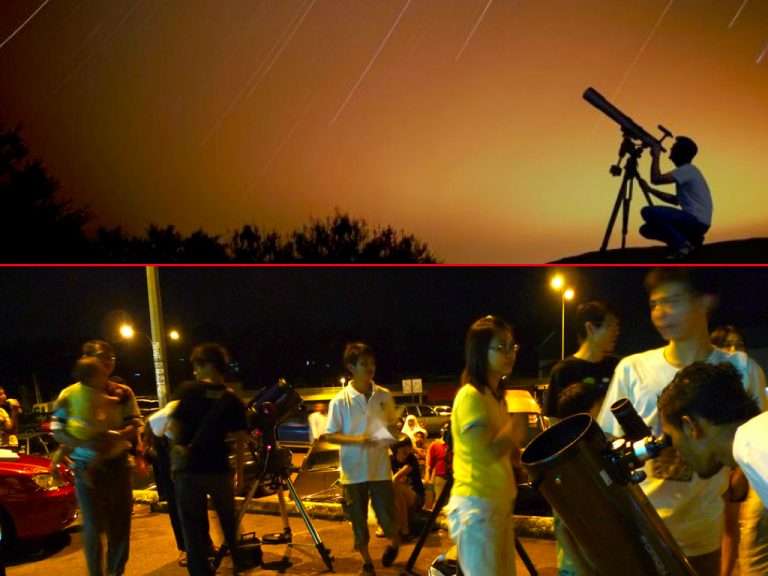
All that said, perhaps the most compelling reasons to get into astronomy are the small, personal ones. It can be a fulfilling solo activity; a chance to unplug from TV and Twitter and have a few moments of silent contemplation under the stars. At the same time, stargazing can be a great social event; something different and meaningful to do with the people you care about.
Some people love astronomy just for the aesthetics of it. The universe is a beautiful, wondrous place, and watching a meteor shower, or the dance of the Aurora Borealis, or the explosion of a distant star, can be an unforgettable experience.
So now that we’ve covered the why, let’s get to the how.
How do you start getting acquainted with the sky?
It’s easy. Go outside tonight and look up. The night sky is full of delights, even without a telescope. To learn some constellations, start by getting yourself a good map of the stars.
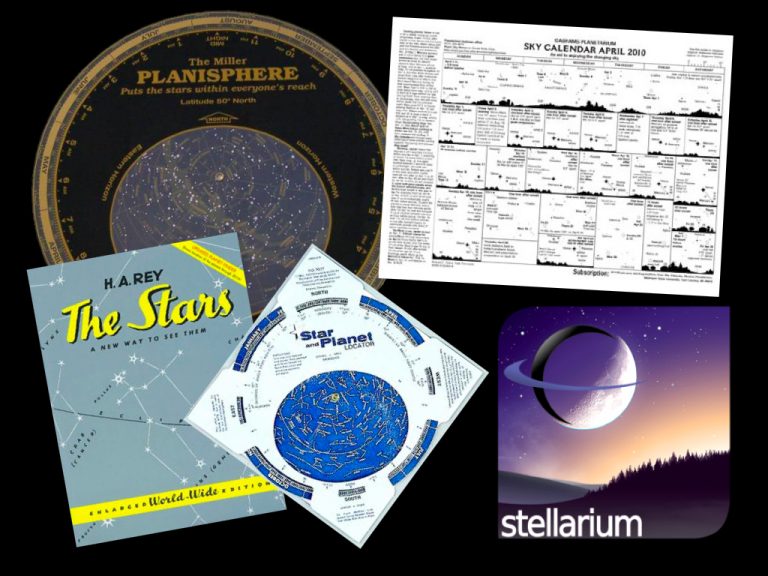
You could print out a simple map of tonight’s sky. Or have one sent directly to your door—one of my favorites is the Abrams Sky Calendar, published by Michigan State University.
Another useful tool is a a circular star map called a planisphere. With a quick spin, you can set a planisphere to show you what the stars look like on any given night, so this type of star map works year ’round. You can buy a fancy plastic one for around ten bucks, or find a free, printable version online.
If you prefer electronic solutions, these days there are dozens of good astronomy apps and programs for every conceivable platform. While a full rundown of the best options would be an article of its own, I did want to mention one of my favorites: Stellarium is a free, open source astronomy program that’s both versatile and beginner friendly. Once you’ve learned a few of its basic features, it might prove to be your new favorite companion as you begin your astronomical journey.
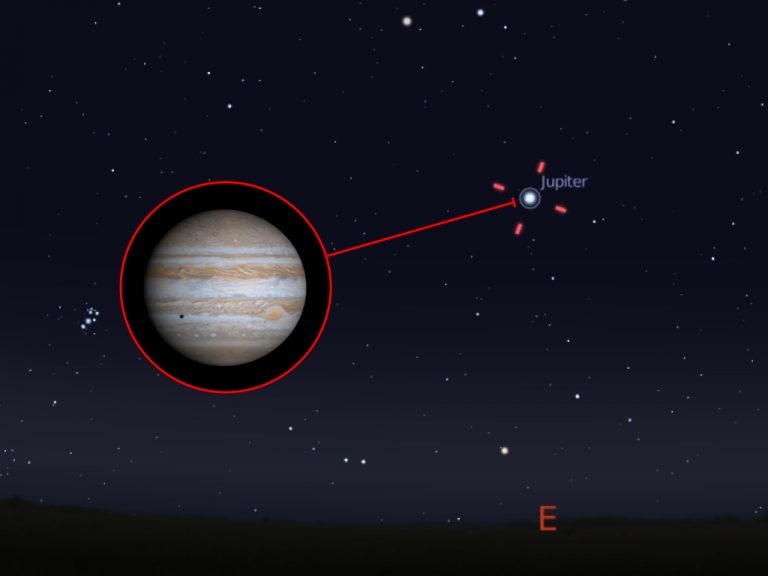
A good sky map or app will also let you track down the current locations of the visible planets. The Earth’s neighbors–Venus, Mars, Jupiter, Saturn, and the elusive Mercury–appear to wander across the background of stars in our sky, so it helps to know where to look on any given night. Planets are typically some of the brightest objects in our night sky, however, so they can be fun to find and identify.

When you go outside on any cloudless night, you can always start by looking for one of the most famous star pictures: the Big Dipper. If you can find its easily recognizable pattern of seven bright stars, you can use it to find other stars and star pictures in tonight’s sky.
If you draw a line through the two stars at the end of the Big Dipper’s bowl, you can find a very special star: Polaris, the North Star. Polaris is directly above our North Pole, and can be found in that same spot in the sky—any time of night, any night of the year.

Attached to Polaris, you can find the another famous star picture: the Little Dipper. Learning the sky is all about little tricks. Learn one at a time, and pretty soon your eyes will be hopping all across the sky, finding prominent stars and star pictures as you go.
Let’s go back to the Big Dipper. Draw a line down through the bottom of its bowl, and you can find a backward question mark. That’s the head and mane of Leo the Lion. Here in the Northern Hemisphere, Leo is a springtime constellation. When we see him in our early evening sky, we know that warmer weather is on the way.
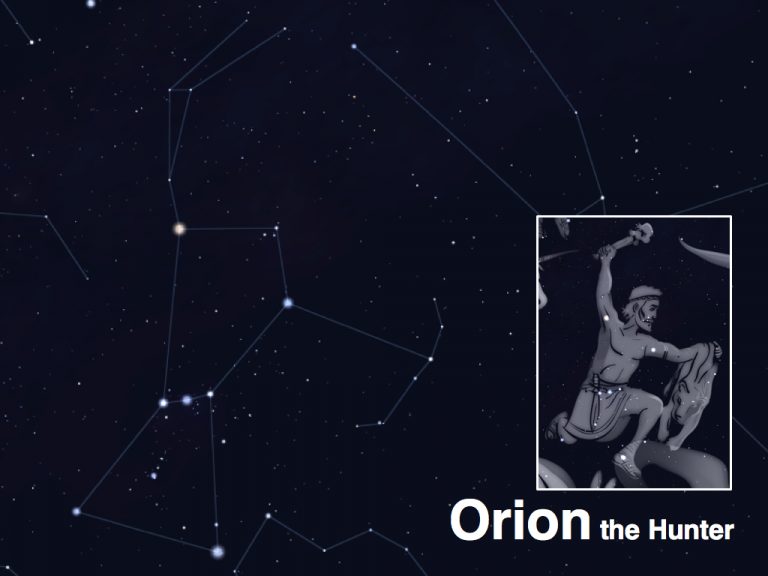
During the colder months, you can glance toward the southern sky and quickly spot another big, bright, famous pattern of stars. Three bright stars in an almost perfectly straight line mark the belt of Orion, the mighty hunter. It’s not hard to imagine a stick figure person out of the stars surrounding the belt.
One of my favorite things about the constellations is the mythology. Some of the stories behind our constellation characters are absolutely wild. You probably already knew Orion, the big, tough, heroic hunter, but did you know that his name was originally spelled Urion? That’s Urion as in urine… because he started his existence as a puddle of pee? No joke.

Below Orion, you can find Sirius the Dog Star, in one of the hunter’s hunting dogs, Canis Major. Just draw an imaginary line down, though the Orion’s belt, to find it.
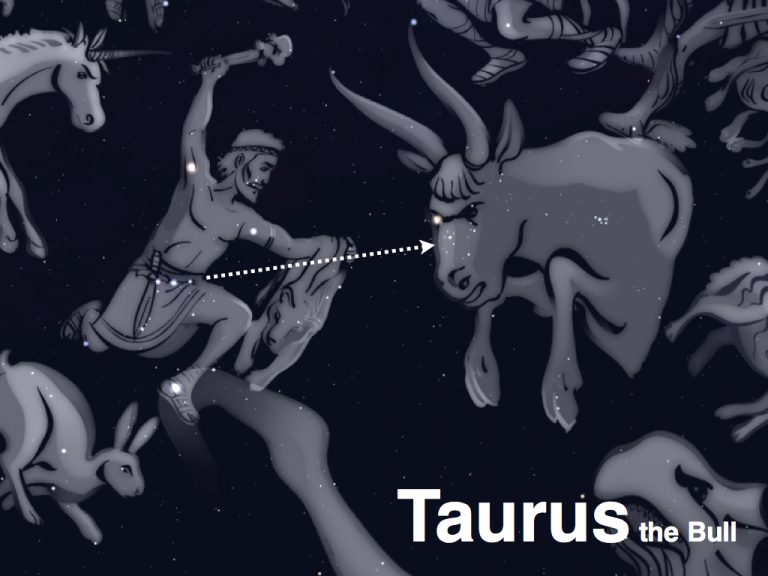
You can also extend an imaginary line upward, through Orion’s belt, to find Taurus the Bull. The constellation of Taurus commemorates the god Zeus–a major creep in Greek mythology–turning into a beautiful white bull, just so he could trick young women into riding him.

In the shoulder of Taurus, keep an eye out for a little cluster of stars called the Pleiades, or Seven Sisters. A long time ago, the Pleiades were used as an eye test. If you had excellent vision, you were supposed to be able to count all seven stars. It’s tough, especially since at least one of those stars isn’t as bright as it used to be. Don’t worry, though. Looking at the Pleiades through a modern telescope, we can see that this cluster is actually made up of about a _thousand_ stars. It’s a beautiful sight to behold, an evergreen attraction for amateur astronomers.
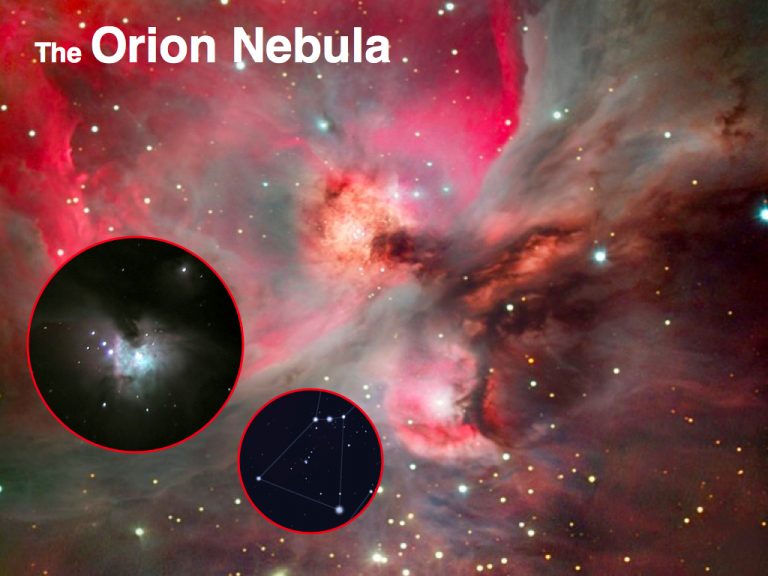
The next time you’re looking at Orion in the real night sky, take a look just below his belt. If the sky is dark enough, you just might spot a faint, hazy patch of light. Through a small telescope, we can see that it’s actually the Orion Nebula, a giant cloud of dust and gas. It also happens to be a stellar nursery, where baby stars are forming.
Exploring the sky with just your eyes can be fun and rewarding, but a small telescope will open up a whole new realm of celestial wonders. So much of what the night has to offer is too faint and far away for us to see without assistance. With the right equipment, you’ll be able to find more stellar nurseries like the Orion Nebula, more families of stars like the Pleiades, not to mention the ghostly corpses of dead stars, and even galactic star cities outside our own Milky Way galaxy. You’ll also get a better view of objects closer to home, from the Moon’s craters, to Saturn’s rings, to Jupiter’s moons and Great Red Spot.
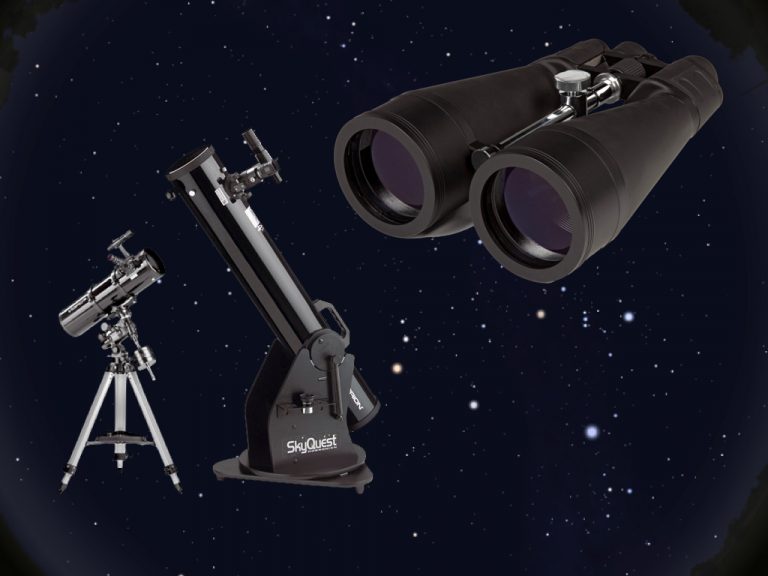
A comprehensive guide to buying a first telescope is a bit beyond the scope of this article, but you can find a dozen such resources with a bit of Googling. I will say this: Do yourself a favor, and do your homework before buying.
First of all, at least consider a good pair of binoculars as your first big investment in astronomy. The detail you see in the night sky through binoculars will amaze you.
Broadly speaking, there are two types of telescopes that you should avoid. The first is the classic $50-$100 “AMAZING 500 POWER!!!” department store telescope. The stars are free, but expect to pay $100-$300 for a simple, good quality beginner telescope from a reputable telescope manufacturer. That step up in quality should get you a telescope that you can see clearly though, that will stay pointed in the right direction, and that won’t fall apart after your first stargazing session.
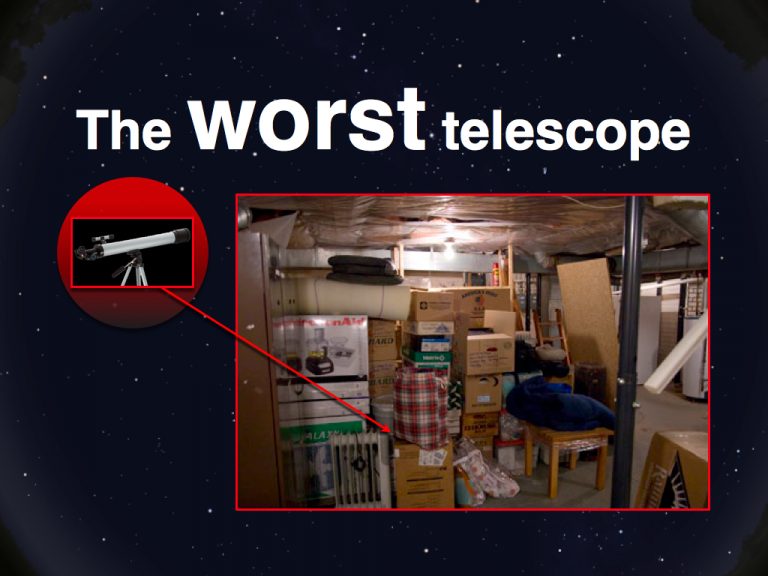
The second telescope you don’t want: the one that ends up collecting dust in your basement, either because it doesn’t meet your needs, or because nobody ever showed you how to use it. As you get into astronomy, there’s plenty to help be found, all around you. Take full advantage of it. In addition to surfing the internet and visiting your local planetarium, see if your community has a local astronomy club. There, you’ll find folks who will teach you about the sky, and who will invite you to look through their telescopes. Amateur astronomers will be almost universally friendly, and many will jump at the chance to help someone new to the hobby.
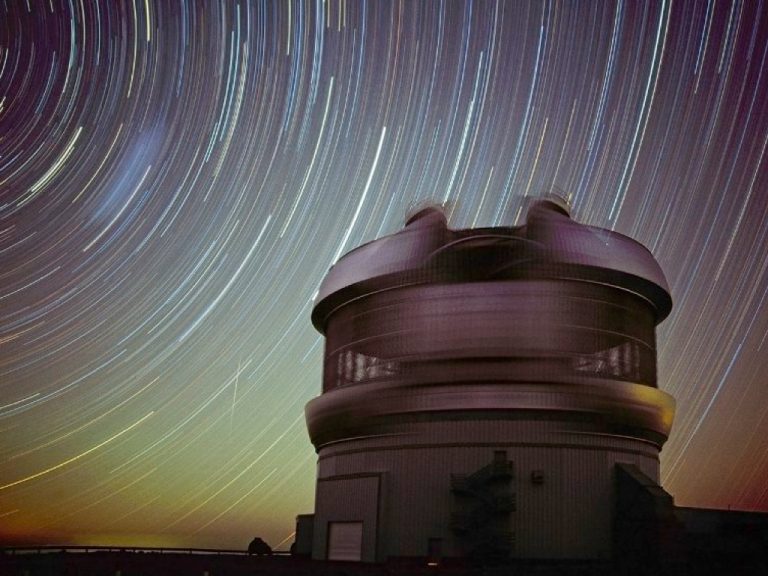
If you’re lucky–as I’ve been for most of my life–your local astronomy club might even have an observatory, where you can take advantage of larger and more powerful telescopes than you’d likely ever buy on your own.
For helping finding an astronomy club, observatory, or planetarium in your area, check out this search utility, courtesy of Sky & Telescope Magazine.
Amateur astronomy is easier to get into than ever, and I hope this article has convinced you to give it a try. It doesn’t matter whether you bring along a paper star chart or the hottest new phone app, a shiny new telescope or just your eyes. The stars are calling. Step outside and look up. The whole universe awaits.
[word count ~2,200]
